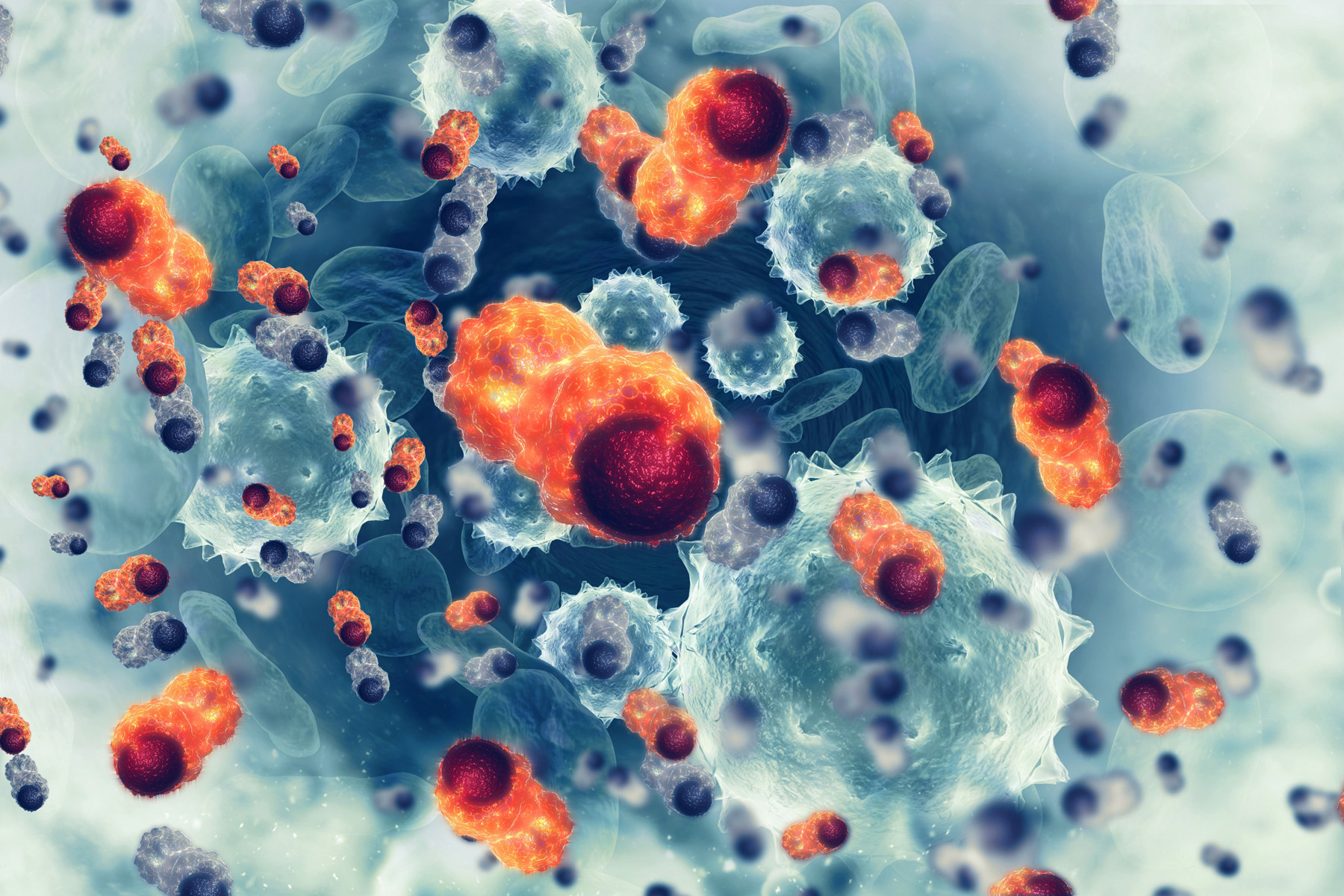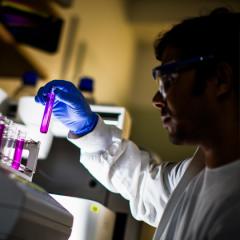New nanotechnology from the AIBN labs could help an emerging and non-invasive cancer treatment become even more effective.
Photothermal therapy (PTT) is a relatively new but increasingly popular cancer treatment that involves converting near-infrared light energy into heat to destroy cancer cells.

However - despite promising results - PPT can risk upsetting the balance of certain highly reactive oxygen species in our bodies, which can drive inflammation and ultimately hinder the success of the treatment. Stay on top of our industry news and developments, events and opportunities, by joining The NetworkJoin The Network
AIBN PhD scholar Huayue Zhang and Dr Run Zhang say monitoring reactive oxygen species such as hypochlorous acid during PTT is therefore crucial.
And now they believe they’ve got technology that is perfect for the job.
In the journal Advanced Functional Materials, the pair detail how their hypochlorous acid-responsive theranostic nanoprobe allows real-time cancer detection and monitoring of inflammation progression during PTT.
“Ultimately,” Huayue says, “this is a novel theranostic nanoprobe system for cancer diagnosis that will also enhance non-invasive treatments.
“Successful development of this theranostic nanoprobe offers a new tool for monitoring tumour treatment, promising for mitigating tumour recurrence and metastasis in future.
Huayue has led the nanoprobe project for two and a half years under the guidance of Run, an AIBN emerging group leader.
“Therapy-induced inflammation poses a significant obstacle to the effectiveness of treatments like PTT,” Run says.
“We’ve previously seen strategies proposed such as combining anti-inflammatory drugs with PTT - or scavenging reactive oxygen species - to optimise PTT outcomes, which show promising results compared to PTT alone.
“What our technology allows is real-time monitoring of inflammation progression during PTT – an all-in-one tool that allows precise inflammation control and improves the odds of containing and eliminating cancer.”
The ratiometric photoacoustic probe - also known as AuNRs@SiO2-CAA - was synthesised by covalently linking a hypochlorous acid-responsive photoacoustic molecular probe to mesoporous silica-coated gold nanorods.

At the cellular level, the probe effectively distinguishes cancer cells and activates macrophages by quantitatively detecting elevated hypochlorous acid levels.
In vivo, the intravenously injected probe accumulated significantly at tumour sites, with the intensity of the ratiometric photoacoustic signal correlating with tumour size.
Finally – once PTT is complete - the probe can reflect the severity of inflammation through monitoring hypochlorous acid levels.
Huayue and Run were assisted in this work by a host of AIBN colleagues, including PhD scholars Miaomiao Wu, Firasti Sumadi, Mazen Alanazi, and Zexi Zhang, as well as NHMRC Emerging Leadership Fellow Dr Changkui Fu.
Other contributors include former AIBN researchers Professor Gordon Xu and Dr Hang Ta, as well as Dr Qingtao Meng from the School of Chemical Engineering at the University of Science and Technology, Liaoning.
You can read the nanoprobe research for yourself here.


